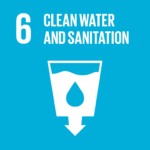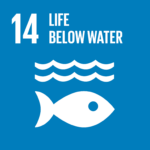Sourcing - All planting methods require available ‘wild stock’ as a source. This stock can be seeds or small cuttings - or seedlings - which need to be harvested and implemented by either a professional who is also trained in scuba or snorkeling the majority of the time.
Depth - The water depth at which the seagrass grows greatly affects the costs, labor intensity and level of implementation. Shallower waters allow for restoration works to be carried out by snorkeling or even by foot, provided that the depth is shallow enough to allow a person to reach the bottom while holding their breath.
Planting methods in deeper waters however require the use of SCUBA equipment, experienced boat operators and trained SCUBA divers, which usually translates into high costs. Intertidal areas are often easily accessible on foot during low tide provided they are not extremely muddy and dangerous to wade through. However, while labor-costs are typically high in western economies, this may not be the case for restoration programs that involve local communities and/or volunteers in other parts of the world.
Materials required
- Seagrass transplants or seeds
- Hessian, jute, or sisak sacks
- Scissors or knife
- Metal (pure iron), stones or wooden pegs
- Snorkel equipment
- Marked poles
- Boat (for deeper meadows)
Steps of implementation
- Seagrass transplanting: Firstly, seedlings need to be nurtured in underwater nurseries or from more healthy sites before transplanting them to the meadow zone of focus.
- Mattress arrangement: The sacks need to be cut open so they cover a larger surface area resembling a ‘mattress’, then staked to the seabed of the site at-topic using pegs, sticks or stones. Yet studies by Holmer et al. (2005) show that using uncoated iron pegs for seagrass interventions had positive effects on seagrass leaf growth and nutrient incorporation. This is because as the nail corrodes, leaving iron additions in the sediment surrounding the seedlings without leaving heavy metals behind.
- Seagrass weaving: Small fissures are then cut into the fabric which the transplanted seagrass is then planted in. These should just be big enough to fit the seagrass seedling in but narrow enough to hold it in place so it doesn’t get washed away by waves (watch video for a visual example here).
- Clear demarcations: It is important to clearly mark the planting areas, so its boundaries are clearly visible (e.g. poles, buoys).
Considerations for implementation
Bag Strength - Due to breakdown of hessian bags and wave-exposure, there can be a relatively high mortality rate of the transplanted seedlings if not fitted in a suitable location. Alternatively, if the sacks show minimal signs of decomposition they can be cut away to allow more room for the seagrass leaves to develop as most species reach maturity between two weeks to a few months, and grow up to one foot tall (more information can be found here).
This intervention contributes to:



- Community driven seagrass restoration by using hessian mattresses on Wasini Island, Kenya
On Wasini Island, Kenya, several seagrass restoration projects have been initiated to halt seagrass degradation. The Wasini Beach Management Unit in collaboration with the local community have restored 1 hectares of seagrass by using hessian mattresses. Next to these restoration efforts the Wasini Beach Management Unit (BMU) is also training other BMU’s in Kenya on restoring seagrass and raising awareness on the importance of seagrass ecosystems.

